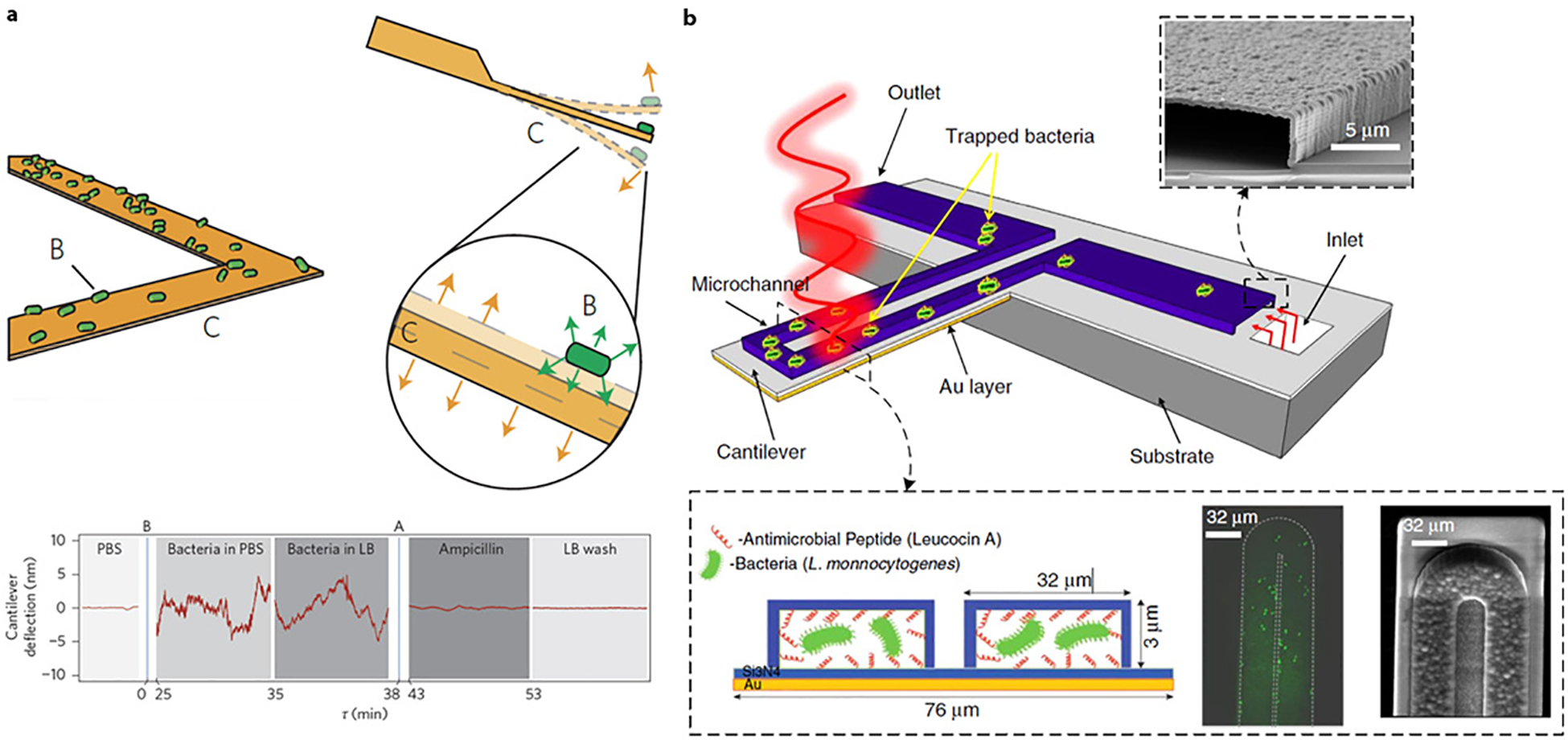Figure 6.

(a) Cantilever biosensor for detecting bacterial susceptibility to antibiotics. (Top) The cantilever is conjugated with a bacteria-specific receptor to capture the target bacteria. The attachment of bacteria to the cantilever leads to a change in cantilever fluctuation. (Bottom) Deflection of the cantilever for the antibiotic susceptibility testing (AST) experiments involving Escherichia coli. Panel adapted with permission form Reference 125. Copyright 2013, Springer Nature. (b) Microfluidic cantilever for detecting bacteria and their antibiotic susceptibility. (Top) The microfluidic channel filled with bacteria supported on a silicon substrate and irradiated with a specific wavelength of tunable infrared light. (Bottom) The inner surface of the cantilever’s microchannel was functionalized with a bacteria-targeted receptor. Shown on the right are fluorescent and scanning electron microscope images from the top side of the microchannel. Panel adapted with permission from Reference 126 under the terms of the Creative Commons Attribution 4.0 International License, http://creativecommons.org/licenses/by/4.0. Abbreviations: LB, lysogeny broth; PBS, phosphate buffered saline.
